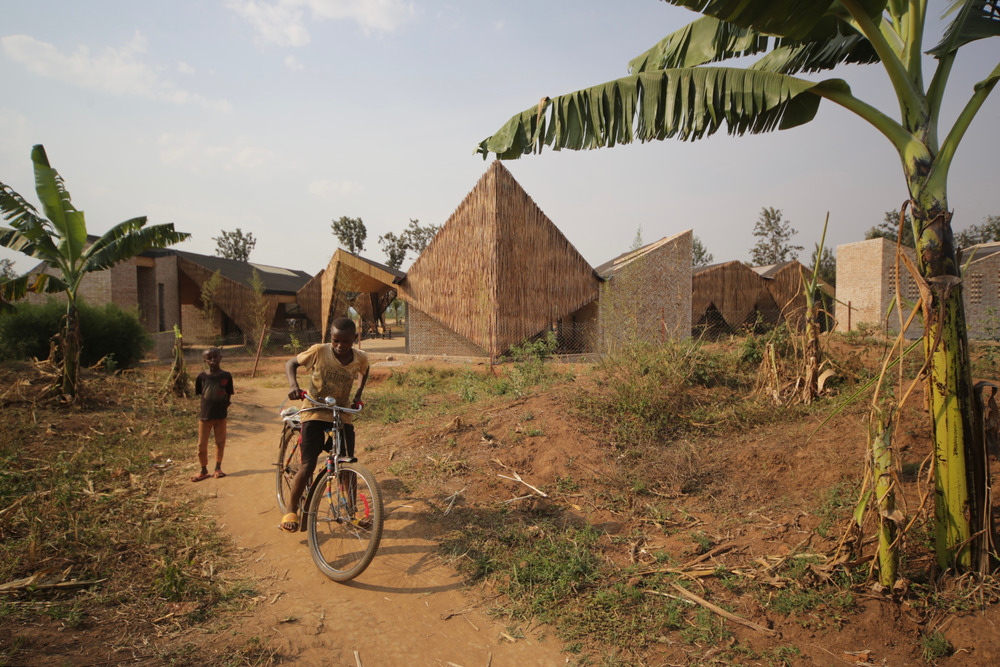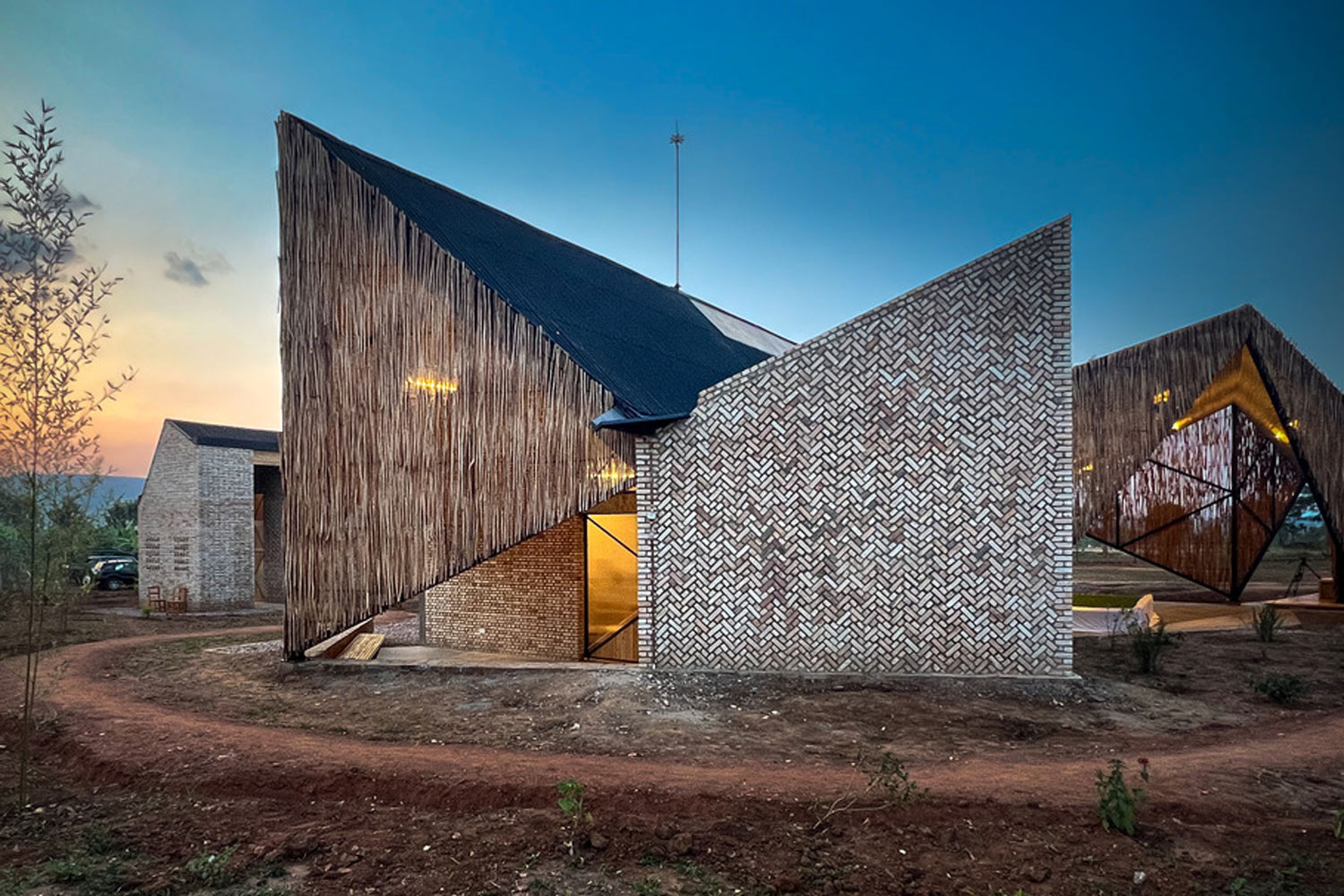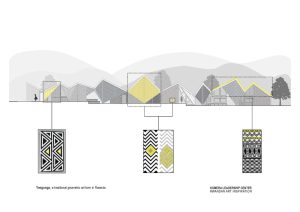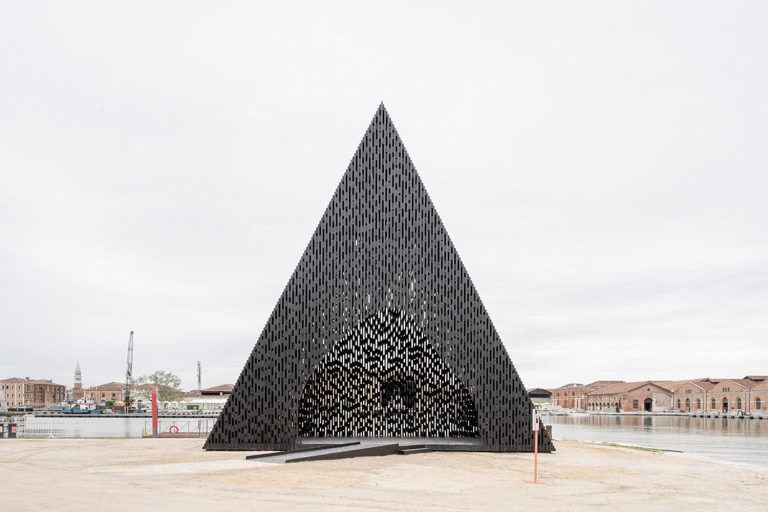
BE Design designed the Komera Leadership Center, a facility in Rwanda’s rural eastern province that offers health, education, and mentorship programs to young women, as well as a space for family development initiatives and community gatherings. According to the designers, the Leadership Center, which is strategically located on the main road across from the village football pitch, serves as a much-needed community and education hub for local residents.
The building’s heart features a flexible space that can be used as a gathering hall or a series of classrooms to accommodate the wide range of activities and programs desired by the community for the Leadership Center. When closed, large, hinged translucent panels transform the space into three classrooms. When the panels are opened to 90 degrees, they form a large meeting hall for the community. The space can accommodate larger events, such as performances and ceremonies when fully opened to 270 degrees. These transforming spatial functions are enabled by large adjacent storage spaces.


The roof forms, woven eucalyptus screens, and brick patterns are influenced by traditional “Imigongo” art from the region and are associated with the Rwandan word “Komera,” which means “to stand strong and courageous.” The expansive roof connects the administration, health and counseling, classroom and gathering, kitchen and dining spaces, resulting in an abundance of covered exterior spaces for break-out classes and informal meetings. The large eucalyptus screens provide shade, enclosure, and privacy for outdoor spaces.
The Komera Leadership Center was built in collaboration with Rwanda Village Enterprises (RVE), with the vast majority of materials sourced locally. BE Design employed a local workforce with an average of 40% female representation and provided on-site skilled labor training, good income and savings accounts, personal protective equipment and safety equipment, and marketable construction skills. The firm also collaborated closely with the community; their contributions were critical from the center’s conception to its completion.

























































